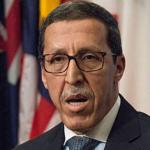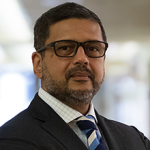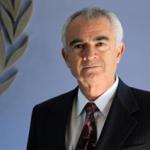Middle-income countries (MICs) currently comprise 108 countries that, together, account for about 30 per cent of global gross domestic product (GDP) and make up 75 per cent of the world’s population, and nearly two-thirds of people in acute multidimensional poverty. Although MICs contributed little to climate change in the past, they currently account for 65.5 per cent of global greenhouse gas emissions.
MICs have been hard-hit by the recent confluence of crises. Many still struggle to recover from the setbacks to SDG achievements that they suffered during the COVID-19 pandemic, while being weighed down by growing sovereign debt burdens and a high global interest-rate environment, a persistent cost-of-living crisis and threats to food security, and exposure to climate-related disasters. While many countries scaled up social protection during the pandemic, tightening fiscal space has caused them to retract before economic growth and employment have recovered.
Even before the recent crises, MICs have long faced the underlying challenge of transitioning to growth and development models that would allow them to achieve higher levels of living standards and overcome the so-called “middle-income trap”. The growing threats from climate change and other environmental crises have increased the urgency to switch to more sustainable growth and development models that are driven by innovation and productivity, away from models based on low wages and excessive dependence on natural resources.
The transition to more innovation-driven, sustainable and inclusive growth models will require large-scale investments from both public and private sources. However, just as MICs are constrained by tight fiscal space and high cost of accessing international financial markets, their access to concessional international finance is limited by their middle-income status. There is a need for more detailed, multi-dimensional needs assessments that go beyond GDP per capita to inform national policies and international cooperation, and for new and innovative financing mechanisms to mobilize the resources needed for sustainable transitions. In turn, revitalized multilateral cooperation for the provision of global public goods – such as climate change mitigation and a reform of the international financial architecture – can help to reduce risks and vulnerabilities.
Proposed guiding questions:
- What are the greatest challenges to SDG implementation in MICs as they navigate the current confluence of crises?
- What are key barriers in switching to more sustained, sustainable and inclusive growth models that can help MICs achieve the SDGs?
- What development strategies are most promising to address barriers and what is needed for their implementation?
- How can the international community support MICs in addressing debt vulnerabilities and ensuring better access to financing that is aligned with MICs sustainable development priorities, and what role is there for measures that go beyond GDP?
- Given their rapidly growing economic weight, how can MICs enhance their role as global drivers of sustainable development, including through South-South cooperation and peer-learning?
- How can the UN development system further strengthen its support to MICs, including through its reinvigorated resident coordinator system and the UN Sustainable Development Cooperation Frameworks, and as a convener to promote the provision of global public goods that can reduce risks and vulnerabilities?
Chair:
- H.E. Ms. Paula Narváez, President of the Economic and Social Council
Interactive panel discussion
Moderator:
- H.E. Mr. Oman Hilale, Permanent Representative of Morocco to the United Nations
Panellists:
- Mr. José Manuel Salazar-Xirinachs, Executive Secretary of the Economic Commission for Latin America and the Caribbean (ECLAC)
- Mr. Somik V. Lall, Senior Adviser to the Chief Economist of the World Bank
- Ms. Nurgul Dzhanaeva, Forum of women’s NGOs, Kyrgyzstan (MGoS)
Lead Discussant:
- Ms. Sude Balaban, Global Co Lab Network, Turkey
Ministerial Respondent:
- H.E. Mr. Hugo Allan García, Vice Minister for Strategic Analysis for Development at the National Planning Ministry, Guatemala
Interventions by other ministers and participants (up to 2-3 minutes each)
 Welcome to the United Nations
Welcome to the United Nations







